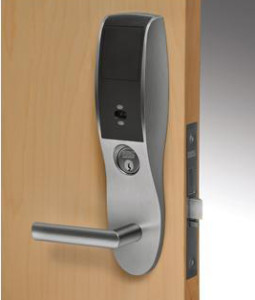 In 2015, it seems like nearly every electronic gadget we buy has a wireless option. Wireless keyboards and mice, wireless printers, and wireless phones are all common items we see in our offices every day. Because the world wants to be completely wireless, it makes sense wireless locks are all the rage
In 2015, it seems like nearly every electronic gadget we buy has a wireless option. Wireless keyboards and mice, wireless printers, and wireless phones are all common items we see in our offices every day. Because the world wants to be completely wireless, it makes sense wireless locks are all the rage
How Wireless Locks Work
When I hear the words “control room” I don’t think of it in connection with wireless locks. No, I think of the room in Jurassic Park that has a million computer screens and very hi-tech computer programs for 1992 that can apparently easily be hacked by a 12-year-old girl with some basic computer skills.
However, in the world of wireless locks, control rooms don’t really look like that. In fact, a control room can sometimes simply be a laptop. The lock just needs to be able to communicate with its host and that host needs to be plugged into the network.
Wireless locks on a network need to be able to communicate to the hub. The hub talks back to the locks on the network at certain intervals set by the facility manager or owner of the building.
Off the Grid
Wireless locks are battery operated and aren’t powered by the grid. This means that every time the lock “checks back in” with the hub, it uses a little battery power. How often you have the wireless locks set to check in will determine how long your battery lasts. It’s important to note, though, with wireless locks, a battery change becomes a regularly scheduled activity.
Installation
Wireless locks comes in two types: Those that talk to hubs and are hardwired back to the host and those that talks directly to the host via a wireless signal. Some hubs require the wireless locks be within certain proximity of the lock but, if the building is laid out where the locks intersect with other signals, this can become a challenge. With the wireless locks and that talk via a wireless signals, you run the risk of wireless chatter.
Should wireless chatter become a problem, you have a couple of options. First, you can find the source of the chatter. It’s typically caused by anything that’s operating on the same frequency as your locks. If you find the source, you can then create some sort of shield to block the noise (such as a metal box.) Your other option is to resituate the hub somewhere else.
Are you ready to install wireless locks? Do you have questions or need assistance with a certain product? We’re happy to help!

One thought on “Wireless Locks – How Do They Work?”